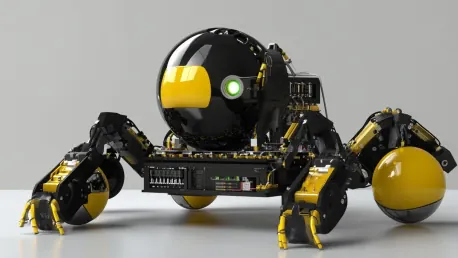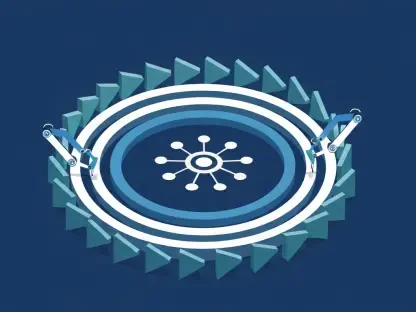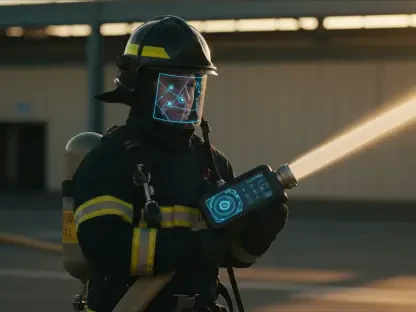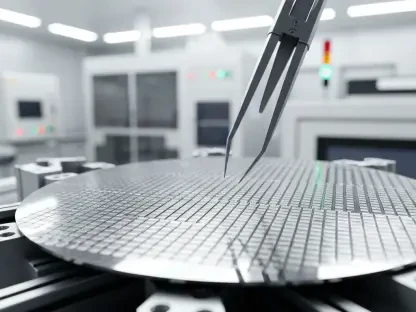The evolving realm of robotics has witnessed a pioneering development that holds immense promise for revolutionizing stability and reliability in the specialized category of robots known as ballbots. Ballbots, unlike their traditional robot counterparts, boast distinctive mobility advantages, effortlessly navigating omnidirectionally due to their spherical bases. However, this unique capability also presents significant challenges, particularly when maintaining balance and stability in dynamic and uncertain environments. Standard control methods, including the widely adopted proportional integral derivative (PID) controllers, have demonstrated clear limitations in effectively tackling these destabilizing factors. Advanced techniques such as sliding mode control have been explored, but they come with drawbacks like chattering, further underscoring the necessity for an innovative control solution that marries simplicity, adaptability, and the learning prowess of neural networks.
Innovative Control Solution
Collaborative Research Effort
In response to these challenges, a recent study led by Dr. Van-Truong Nguyen of Hanoi University of Industry, Vietnam, has introduced a robust and adaptive approach to ballbot control that promises to overcome existing limitations. The research reflects a profound international collaboration, showcasing expertise from various educational institutions and countries. Team members include Associate Professor Phan Xuan Tan from Shibaura Institute of Technology, Japan, Mr. Quoc-Cuong Nguyen and Mr. Dai-Nhan Duong from Hanoi University of Industry, Vietnam, Associate Professor Mien Van from Queen’s University Belfast, United Kingdom, Professor Shun-Feng Su from National Taiwan University of Science and Technology, Taiwan, and Associate Professor Harish Garg from Thapar Institute of Engineering and Technology, Deemed University, India. This diverse and highly accomplished team underscores the multidisciplinary and global nature of contemporary robotic research, collaborating to push the boundaries of what’s conceivable in robot control.
Advanced NPID-RBFNN Controller
Their groundbreaking research introduces an adaptive nonlinear PID (NPID) controller integrated with a radial basis function neural network (RBFNN), tailored specifically for ballbots. This integrated control mechanism addresses the deficiencies of traditional PID controllers by providing several significant improvements, including lightweight computation, excellent stability, reduction in chattering, and robustness against external disturbances. The initial settings for this NPID-RBFNN controller are fine-tuned using a technique known as balancing composite motion optimization. What differentiates this method is the continuous refinement of the adaptive control law during operation, which allows for real-time estimation and effective management of external forces and discrepancies. This continuous adaptability ensures that the ballbots can respond promptly to sudden changes in their environment, maintaining their stability and optimizing their performance even under challenging conditions.
Enhanced Adaptability and Stability
Self-Learning and Self-Adjusting Properties
One of the most compelling features of the NPID-RBFNN controller is its marked enhancement in adaptability to dynamic environments, attributed to its self-learning and self-adjusting properties. This adaptability is anchored in the use of Lyapunov theory to ensure the system’s stability, making it highly robust against unexpected disturbances. Through rigorous simulations and real-world experiments, the researchers demonstrated the superior performance of the NPID-RBFNN controller compared to traditional PID and even NPID counterparts. The results showed notable improvements in maintaining balance and reducing instability, particularly on varying surface conditions. The ability of the controller to learn and adjust itself actively in response to environmental changes significantly enhances the reliability of ballbots in real-world applications. This self-learning trait ensures that the ballbots can operate with a high degree of autonomy, requiring minimal human intervention.
Real-World Applications
Dr. Nguyen and his team envision numerous practical applications for this advanced technology, extending across various domains such as assistive robotics, service robotics, and autonomous delivery. The potential of ballbots to aid individuals with mobility challenges is particularly promising, as these robots could navigate intricate environments and assist users in tasks that require a high degree of precision and stability. In the realm of service robotics, these agile ballbots could adeptly move through dynamic settings like restaurants, hospitals, or airports, providing seamless and efficient service delivery. They are also poised to transform autonomous delivery systems, capable of navigating unpredictable forces such as wind and uneven terrains with ease. This versatility makes them highly suitable for last-mile delivery tasks in urban environments, where conventional wheeled robots often face significant hurdles.
Broader Adoption and Benefits
Addressing Nonlinear and Dynamic Environments
The technological breakthrough embodied by the NPID-RBFNN controller represents a significant stride in addressing the challenges posed by nonlinear and dynamic environments. Its ability to minimize unnecessary movements and chattering not only optimizes energy consumption but also fosters sustainable robotic operations. This optimization translates into longer operational times and reduced energy costs, making ballbots more attractive for widespread adoption in both public and private spaces. Furthermore, the enhanced reliability and safety of ballbots afforded by this advanced control system mean that they can be confidently employed in settings where unpredictability is the norm. The controller’s capacity to smooth out operations, ensuring steady and predictable movements, makes these robots better suited for environments that require a high degree of precision and control.
Impact on Various Industries
To tackle current challenges in ballbot control, a recent study led by Dr. Van-Truong Nguyen from Hanoi University of Industry, Vietnam, has introduced a flexible and powerful approach that aims to surpass existing limitations. This research highlights significant international collaboration, drawing on expertise from multiple educational institutions and countries. The team includes Associate Professor Phan Xuan Tan from Shibaura Institute of Technology, Japan; Mr. Quoc-Cuong Nguyen and Mr. Dai-Nhan Duong from Hanoi University of Industry, Vietnam; Associate Professor Mien Van from Queen’s University Belfast, UK; Professor Shun-Feng Su from National Taiwan University of Science and Technology, Taiwan; and Associate Professor Harish Garg from Thapar Institute of Engineering and Technology, Deemed University, India. This highly skilled and diverse team illustrates the multidisciplinary and global scope of modern robotic research. Together, they are pushing the limits of what is achievable in robot control, showcasing the power of international academic collaboration.









